
Having raised both purebred and mixed breed poultry, I’ve seen the benefits of genetic diversity, such as heterosis (also known as “hybrid vigor”). When we crossed Easter Eggers that laid blue-green eggs with French Black Copper Marans roosters, we expected that the pullets would eventually lay olive eggs…and they did. And these girls turned out be some of the nicest birds we’ve raised to date.
Crossing blue or green* egg laying birds to a bird with dark brown egg genes results in pullets that lay olive eggs, which are a delightful addition to any egg basket. As an added bonus, these birds have lovely feathering and nice personalities!
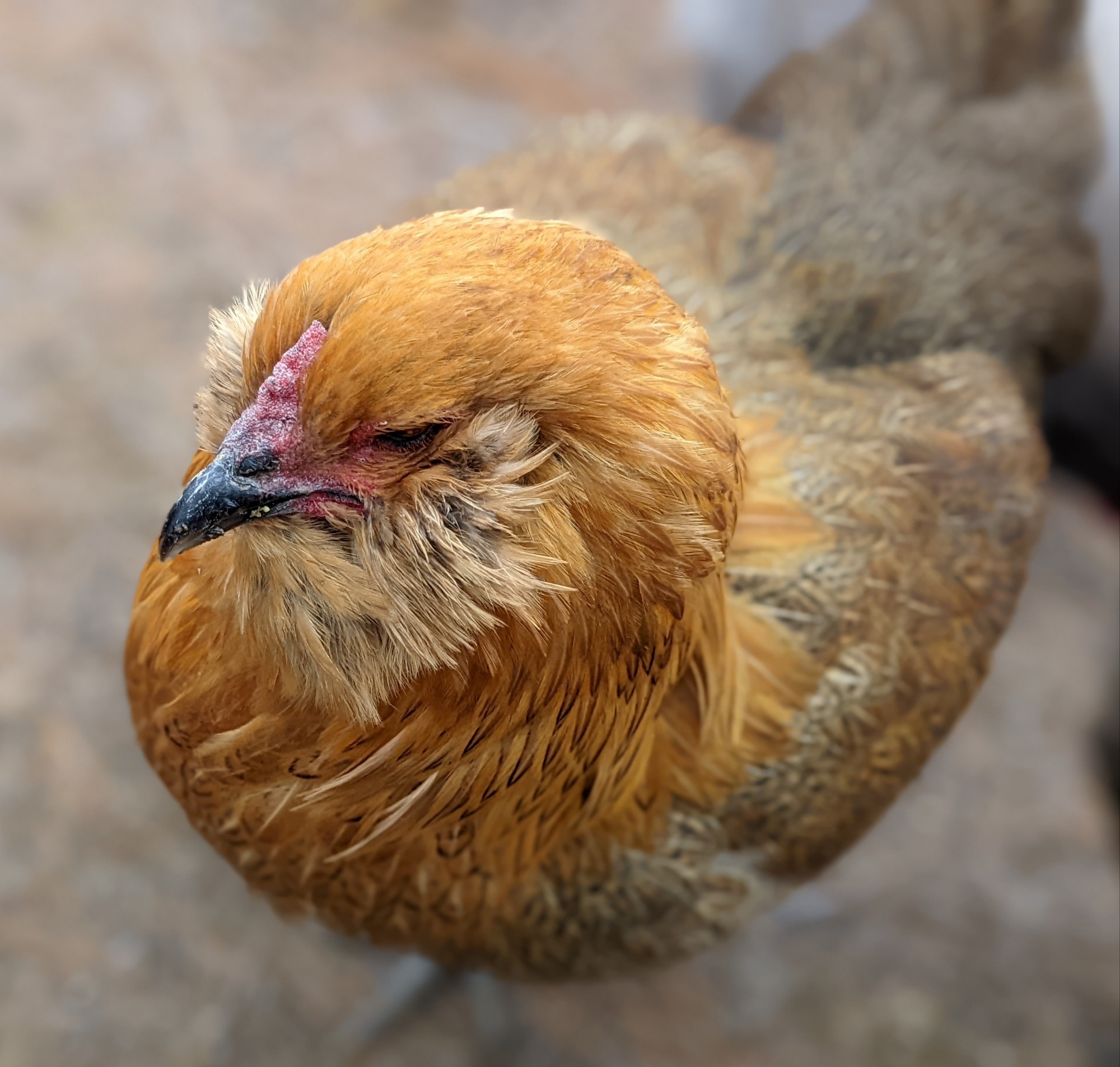
I particularly enjoy that these girls are smart, calm, and friendly. I say “smart” because they were the quickest group to integrate into the main flock, almost immediately understanding that they needed to go into the coop when it began to get dark and easily prompted to go in when it’s not quite dark. I can’t over-emphasize how wonderful it is to have young pullets go into the coop timely at night – it can be difficult to get some young birds to understand the concept, but not these girls. They’re curious and sweet, and some actually seem to like being picked up and held. Lap chickens!
Another intriguing attribute is that these birds may be sex-linked, meaning that they potentially can be sexed by down color at hatch. We didn’t do this intentionally, but realized (after they grew out) that the group we kept appeared to have differentiated physical characteristics…like a color coding, if you will: the reddish-colored chicks grew out into cockerels (males) and the dark-colored chicks grew out into pullets (females).
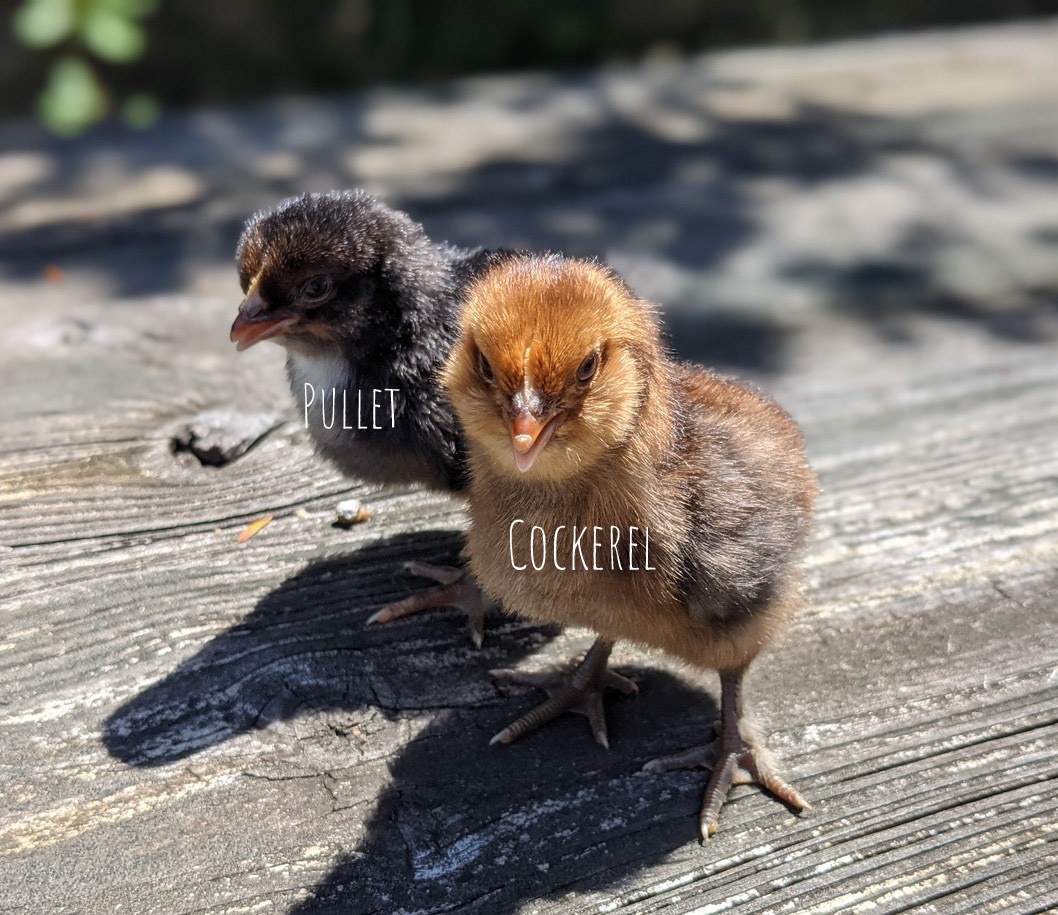
As they feathered out, the cockerels were all either copper or gold with black accents, while the pullets were either black with copper or gold heads or have partridge coloring with gold heads.

Where’s the value in sexually dimorphic birds? First, it helps to know how many of each gender you may have so that you can plan (e.g., breeding groups, processing). Second, being able to sex chicks at hatch helps ensure that no “surprise” cockerels later appear in the flock; this can be especially important if you live in an area or development where roosters aren’t permitted.
As we headed into shorter daylight hours, I was beginning to think that the girls might not reach point of lay prior to Spring. I’ll admit that I’ve been waiting with bated breath on that first egg – what color would it be?? Finally, the wait was over: the first pullet egg was found – on the ground out in the run. Sigh…
If you raise chickens, you understand that pullets sometimes don’t seem to know what’s happening when they lay their first egg, and they can do things like lay the egg on the floor of the coop, outside the coop, on the poop board…anywhere but where we’d like them to lay. With time, though, they figure out where the “right” place – in the coop, atop a cushy layer of shavings and straw in the privacy of a cozy nest box – to lay is, and we no longer have to worry about finding muddy or wet eggs.
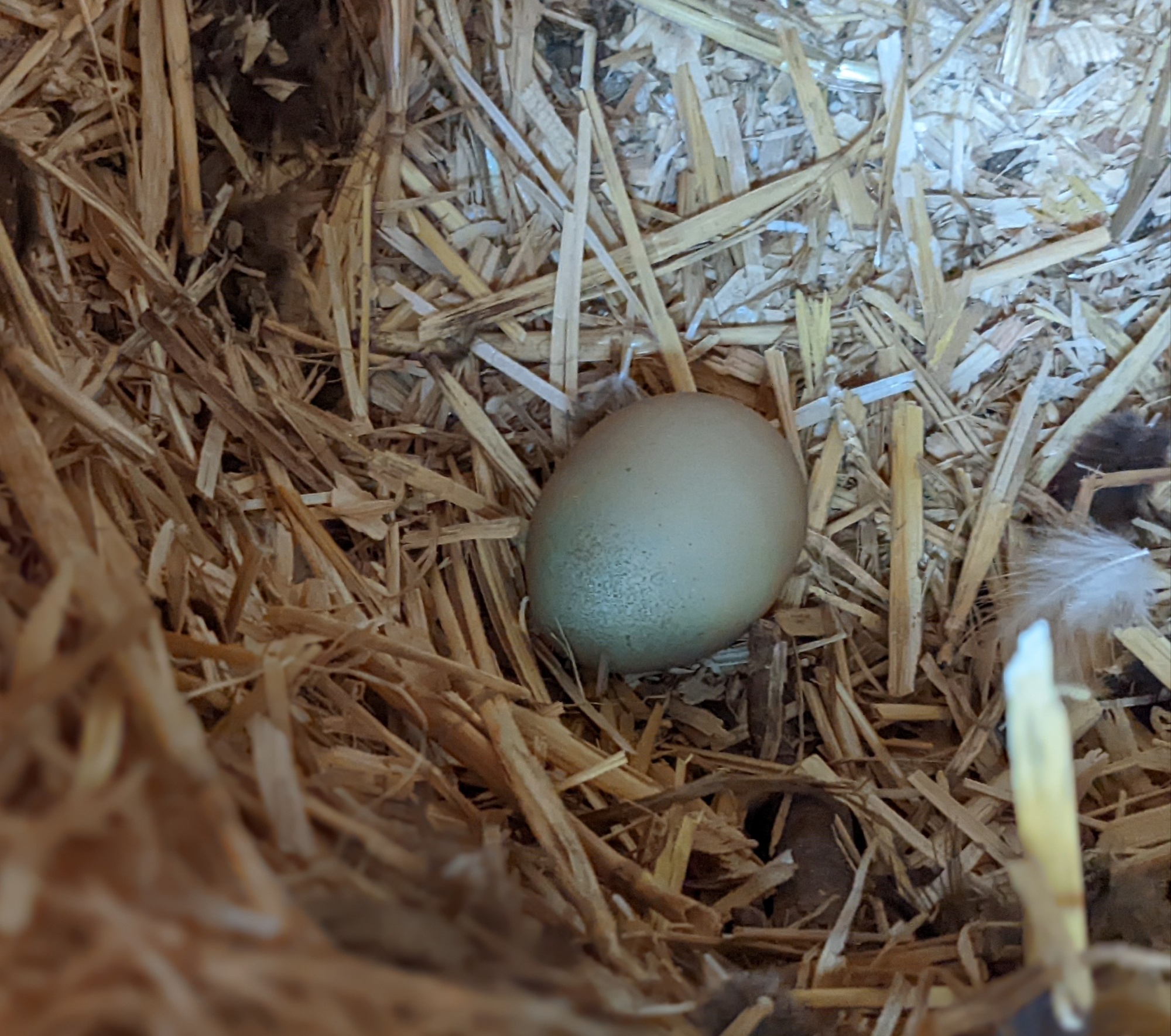
And the color? Exactly as hoped: definitely olive, and more khaki than green. It had a distinctive shape to it, leading me to believe that it was actually from an F2 Olive Egger – there was one in the group, the daughter of an F1 Olive Egger (Silverudd’s Blue x French Black Copper Marans) back-crossed to a French Black Copper Marans rooster. An F3 from this line would likely produce a “cocoa egger”, which would lay dark brown eggs without a reddish tint: beautiful – and different – eggs!

Mom’s name is Roxy, and she’s a beautiful blue hen who lays an unusually large egg with a distinctive “plump”, roundish shape; it seems that her daughter (Jasmine) inherited the shape, and possibly the color, too, because it’s very similar.

Daughter Jasmine is also blue like mom, but has some copper coloring in her hackle feathers, likely from dad. She’s a pretty and calm hen – frankly, I’d love to hatch more like her.
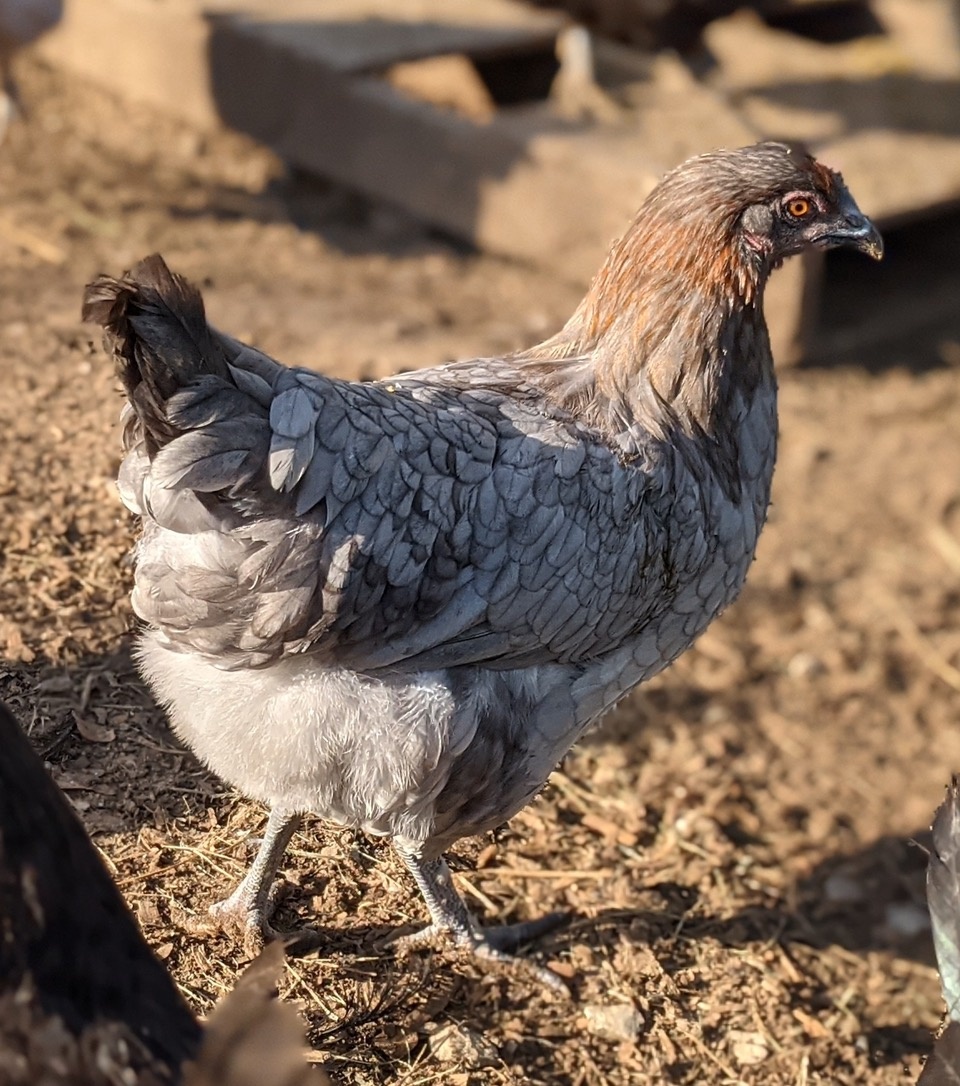
The rest of the pullet group is comprised of F1 Olive Eggers, the daughters of Easter Egger hens and French Black Copper Marans roosters. Physically, the F1 OE group is quite interesting – some have the beards and muffs from their Ameraucana lineage, and some don’t; most have Ameraucana pea combs, but some don’t. There is even a pullet or two with a single comb and muffs. Genetics fun!

Shortly after the F2 olive egg, we found an F1 olive egg, and it also sported a gorgeous shade of olive, though more of a greenish hue. It also had a more typical elliptical shape, so clearly was not from our F2 girl. Needless to say, I was overjoyed to discover that the F1 girls had also begun to lay.
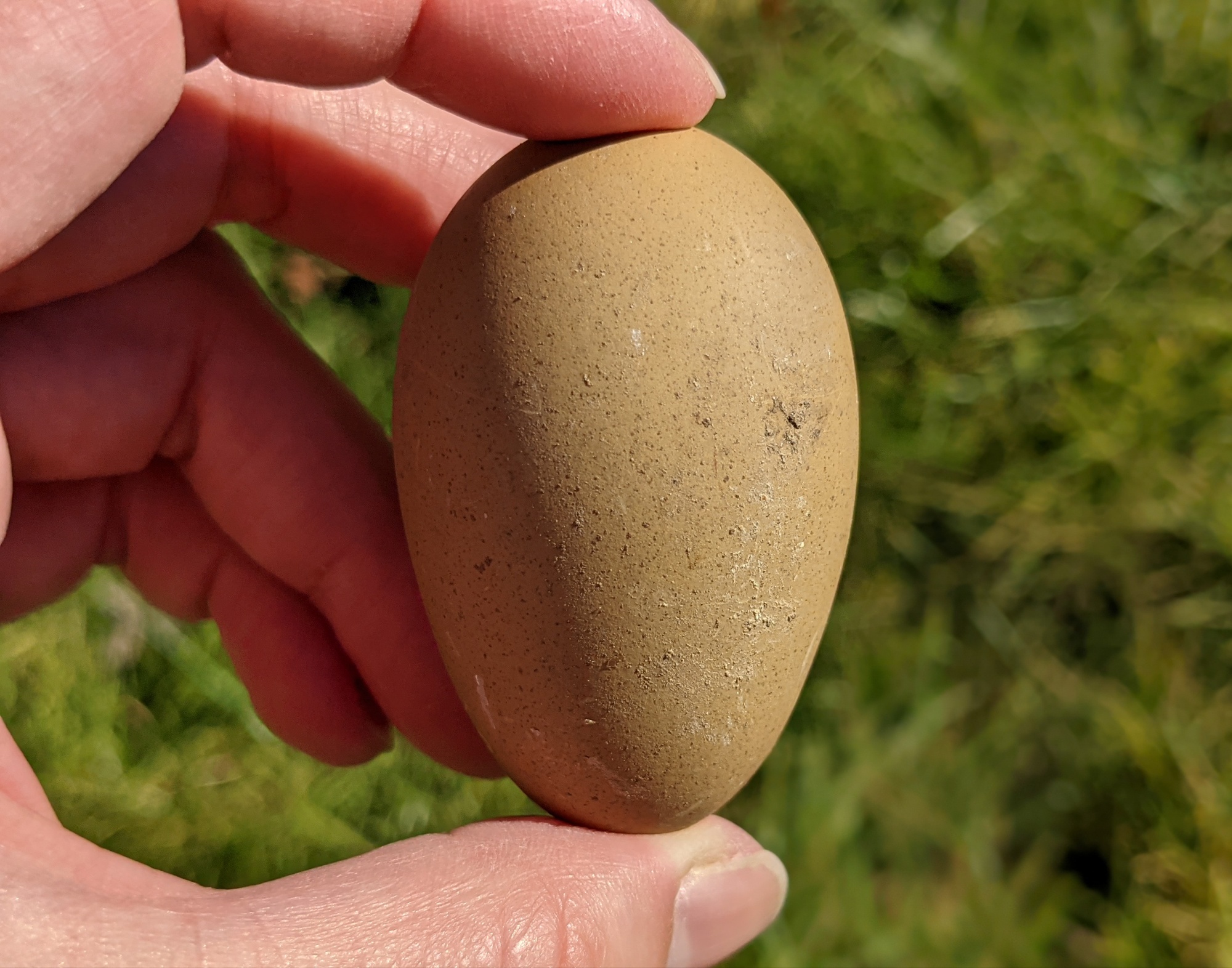
A few days later, another F1 olive egg, in a different – but equally pleasing – shade from the other one. This time, the pullet that laid the egg was kind enough to leave an identifier with the egg in the nest box: one of her feathers. If only every pullet would leave a feather attached to their egg so I could know who laid which egg!

There are few experiences in chicken-keeping that are as much fun as creating your own line of birds, and I intend to keep working with these Olive Eggers to develop my ideal dual purpose chicken: one that has nice size, is healthy and vigorous (including good fertility), forages well/is thrifty, has a calm and friendly demeanor, and lays colorful eggs. A unicorn? Perhaps, but a worthy goal.
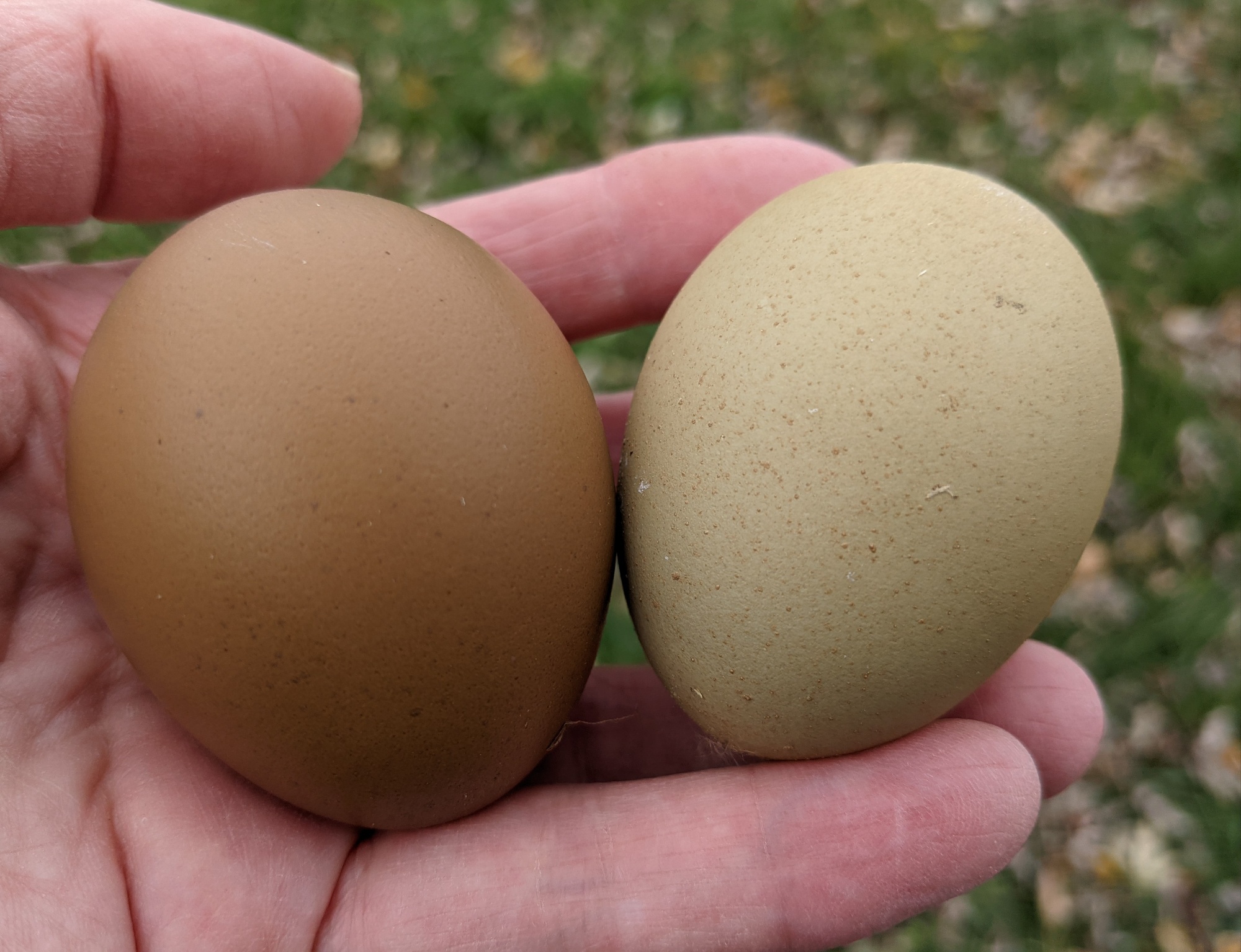
In 2022, we’ll be working with some additional breeds, including Ameraucana and American Bresse, and will be experimenting with crossing those birds with our other breeds to develop a sustainable (true-breeding), (relatively) fast-growing, and productive bird. And, if they also lay pretty eggs – bonus!
* Because of how the blue egg gene works, sometimes a pullet hatched from a green egg may lay pink eggs. For a more detailed explanation of egg color genetics (calling all science nerds! 🤓), check out Scratch Cradle’s comprehensive Genetics Mini-Series.
